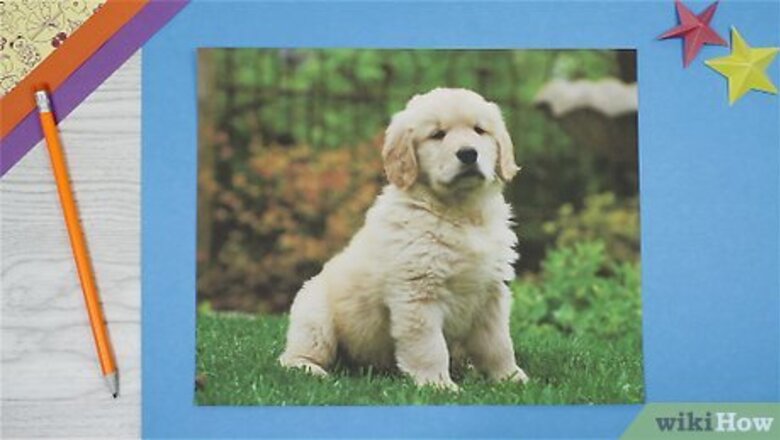
views
Choose Your Design
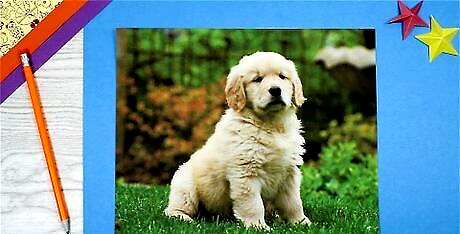
You can print a photograph to use for your puzzle image, draw or create your own, or even use a card, poster, or any other printed image. For a photograph, choose a high-resolution image, and size it based on how large you want your puzzle to be. Print it off or have it developed at a photo lab according to your specifications. For a hand-drawn puzzle image, choose a high-quality paper that’s the size you want your puzzle to be. Using your favorite medium, draw or paint your image directly onto the paper. You can also create your own puzzle image on a computer, and then print it off like a photograph.
Assemble Your Tools
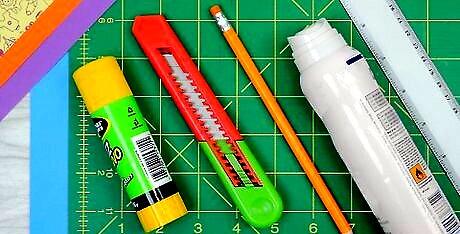
You will need glue, spray lacquer, a ruler, and a pencil. For a cardboard-backed puzzle, you will need sharp scissors or a hobby knife. For a wood-backed puzzle, you will need either a coping saw (a hand saw used for intricate shapes) or a scroll saw, an electric or pedal-operated saw that’s good for intricate curves. Liquid craft glue or spray glue will work best for your puzzle because it’s multi-purpose and won’t damage photographs. If you are using a photograph for your puzzle image, be sure to find lacquer that’s safe for it. You can even use a Dremel tool. It has a variety of blades and attachments. It is suitable for cutting and making little notches.
Select a Puzzle Backing
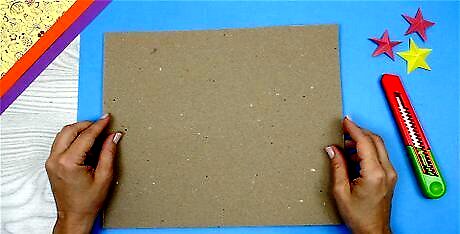
Plywood is more durable and traditional, but this will only work if you have a saw at your disposal and are confident in your skill with that tool. Cutting out a puzzle is delicate work and requires experience. You can also use a good quality cardboard to back your puzzle. This will be much easier to work with, and can be cut with scissors. Craft-quality cardboard can be found at most craft stores. The ideal thickness for a puzzle backing, be it cardboard or plywood, is one-eighth inch (0.3 cm). Look for a piece of backing that’s as close to the size of your puzzle image as possible to avoid waste. You can use the cardboard from on old box to back your puzzle, but make sure it’s clean, undamaged, and flat. Thin cardboard like that from a cereal box will work for a simple puzzle, but thicker cardboard is preferable.
Attach Your Image
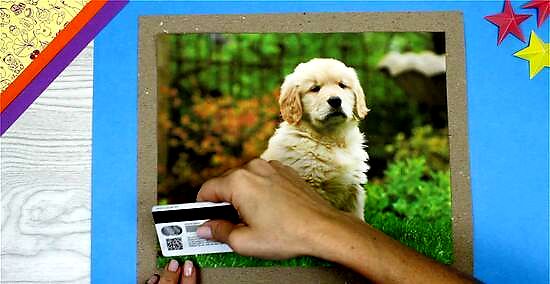
Place your backing on a sheet of wax or parchment paper to protect the surface underneath. Place it good side down. Spray or cover the surface of the backing with glue and spread it around so there’s an even coat all over it. Place your picture onto the backing. Use your fingers to slide it around so it’s centered and straight. With a roller or old credit card, apply even pressure to the picture to help the glue adhere and remove bubbles. Let the glue dry. Glues have different drying times, but give your puzzle several hours to set if possible.
Lacquer Your Image
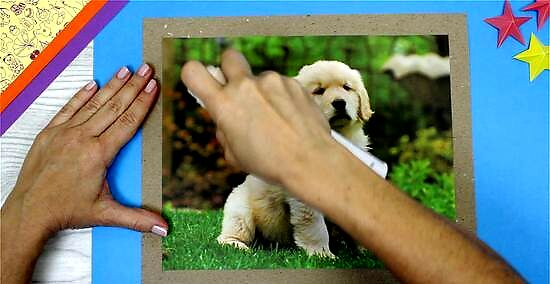
Take your puzzle outside or to a well-ventilated area. Place it back on the parchment or wax paper. Spray an even coat of lacquer over the image. Check the can for drying time, and allow it to dry.
Trim Your Border
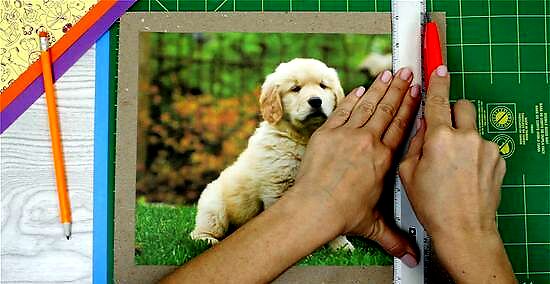
If your puzzle image is smaller than the backing, begin by trimming down the edges of the backing. For a cardboard puzzle, use your scissors or place your puzzle face up on a cutting mat and use your hobby knife. For a wood puzzle, use your saw to carefully trim the border so that the backing is the exact shape and size as the puzzle image. With a hand saw, place most of the puzzle on a solid, flat surface (like a table) with the side you want to cut overhanging the edge. Firmly hold the puzzle with one hand to keep it in place and use your other hand to hold the saw and cut.
Create a Grid
Flip your puzzle over and place it image-side down. Use a ruler to mark out and draw a grid pattern made up of squares that are three-quarters of an inch (for a puzzle with more, smaller pieces) or one inch (for a puzzle with fewer, larger pieces). Instead of drawing your own puzzle template, you can print off templates from sites like Tim’s Printables. Create puzzles for gifts. "I decided to make some homemade puzzles as gifts for my family after reading this. I used photos of each person and even customized the puzzle shapes to match their hobbies—like a guitar shape for my bro, who plays in a band. It was so cool to personalize them this way. My family totally lit up when they saw puzzles starring themselves, and it made the gifts extra meaningful." - Mara J. Make an easy school project. "This article was a total lifesaver for my school puzzle project! It gave super clear, step-by-step instructions that made the whole thing smooth sailing. I really appreciated the pro tips on finding pre-made templates online to simplify cutting out the pieces. Making the puzzle turned out to be way easier than I thought, thanks to having this handy guide." - Jay S. Design puzzles around any theme. "I used the tips here to create puzzle pieces representing mystery book titles for a reading project in my class. The section that explains how to shape puzzles into crazy silhouettes was perfect for customizing my pieces to fit the mysterious theme. My classmates' jaws dropped when I did the big reveal of my literary-themed puzzles!" - Jeremy H. Build skills in woodworking. "As a beginner getting into woodworking, I relied heavily on this article to successfully make some sweet wood puzzles on a scroll saw my partner got me. Now I feel ready to take on more complex carpentry projects just by starting with puzzles to get my skills up." - Pam P. Have a story our readers should hear? Share it with 1 billion+ annual wikiHow users. Tell us your story here.
Draw Your Template
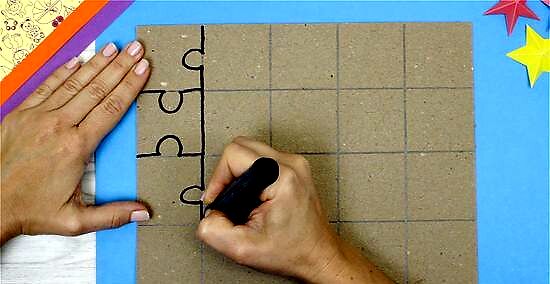
To create puzzle pieces, begin adding ball and socket shapes (concave and convex half-circles) along the edges of the grid squares so that the pieces will fit into each other when the puzzle is cut. You can also use inverted and protruding triangles, squares, or other shapes. For pre-drawn puzzle templates that you’ve printed off, glue them on to the back of the puzzle and allow it to dry.
Cut out Your Pieces
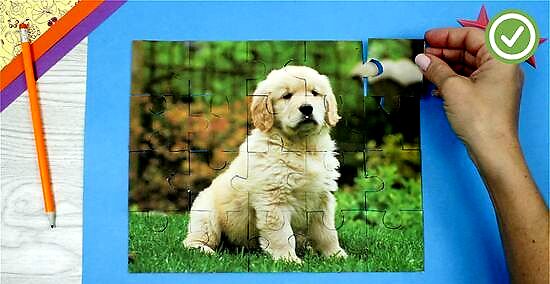
For cardboard puzzles, follow the puzzle piece template you’ve drawn on the back and use your scissors to cut out the pieces. Or, if you’re using a utility knife, put your puzzle face down on your cutting mat and carefully cut the pieces. Or, cut out the pieces with your saw, being careful not to cut yourself. When you have finished, use an eraser to remove any remaining pencil marks. To make it easier, don’t cut out pieces individually. Rather, cut entire rows or columns at a time, and then go back and cut out the individual pieces. The lacquer will help protect the image from damage as you’re cutting out the pieces, and this is especially important if you’re using a saw.



















Comments
0 comment